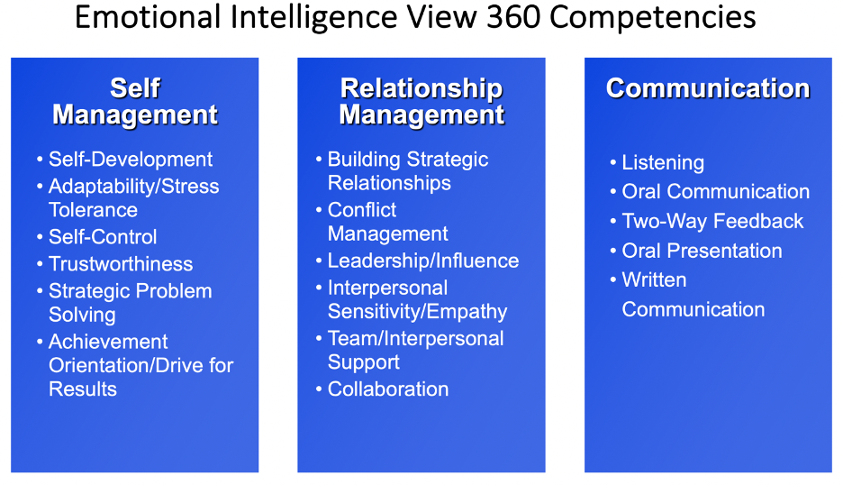Six months into a year, leaders should recalibrate and identify areas of focus for the second half of the year. Ask yourself these questions so that you can best support your direct reports and organizational priorities, whether you’re managing remote or in-person teams.
Are Your Goals Clear and Equitable?
Goals should be set by understanding the current state of the business and identifying where the business aspires to go.
These goals should be related to objectives that employees can directly help to achieve. They should be measurable, accompanied by a deadline, and feed into departmental or organizational goals so that employees understand how their achievement impacts the organization. At mid-year, leaders should dedicate time to reviewing whether team members are prepared for reaching business goals.
What new and different behaviors do employees need to adopt in order to achieve them? Are there new initiatives or efforts designed to maintain competitiveness and profitability? Are there stretch assignments that can develop new skills? As a leader, are you giving clear and actionable feedback to every member of your team? Conducting an honest and thorough assessment of team members, leaders can identify their employees’ capabilities and opportunity areas. The next step is to support team members with coaching and feedback about their work products.
Are you providing equal access to information that enables all team members to grow and advance their individual goals and organizational goals?
This seems clear cut and easy for leaders to accomplish. But making sure the coaching and support plans are intentionally equitable is an aspect leaders may not have focused on before. What does it mean for talent development to be intentionally equitable and how do you accomplish it? Consider these questions:
Are you and fellow leaders providing equal access to information that enables all team members, both of majority and underrepresented groups, to grow and perform in ways that advance their individual goals and organizational goals?
When your organization is developing programs for high potentials, are the requirements for admission based on the future needs of the business? Are candidates selected according to transparent criteria? Is the evaluation of performance based on clearly identifiable measures or is it based on primarily on relationship capital and how well the person is perceived?
It comes down to this: Make sure that you remove unconscious or conscious bias in your workplace programs so that every employee can be evaluated based on their contributions. There should not be subjective criteria not based in the business. Below is an example of a SMART goal that will ensure that bias is removed from the process.
Develop new sales commitments with existing clients and develop new business opportunities with prospective clients to effectively secure a total of 300 confirmed sales opportunities by December 2021 that results in 4% growth for the Atlanta Office.
Are You in Touch with Your Emotional Intelligence?
Assessment isn’t just for those who report to a leader. Executives, managers and supervisors need to conduct self-evaluations in broad areas to assess how well they perform in their roles. Even the best executive coaching guide or program can’t make a difference if a leader isn’t willing to look inward with honesty. Only by reflecting on what kind of leader they are now can they draw a path to the leader they intend to become. Using Hogan Assessments and other 360º assessments are, in our experience, the best ways to define areas to be improved upon and gain understanding into how your leadership style affects others.
Broadly speaking, the competencies of self-management, relationship management and communication are essential to model for teams. These three pillars of effective management give a clear picture of what’s working and what is not in relationships with direct reports and colleagues.
Multiple studies show that the highest performing managers have more social and emotional competence, or what are frequently considered “soft skills.”
While being generally intelligent is considered a major factor in professional success, the ability to identify, understand and handle emotions and behavior effectively could play a much more important role in career trajectory. Multiple studies show that the highest performing managers have more social and emotional competence, or what are frequently considered “soft skills,” than those who are less capable in these areas. Emotional agility allows leaders to align intent and impact that enables clearer communication that benefits both individuals and teams. Below is a sample competency overview often used with coaching clients to evaluate emotional intelligence.

Chart: EnvisiaLearningInc
Growing research literature increasingly suggests that EI and emotional and social competence are significantly associated with job performance in positions requiring frequent customer and interpersonal interactions, even when mental ability and personality variables are controlled. Current research on emotional intelligence suggests that:
- Highly conscientious employees who lack social and emotional intelligence perform significantly more poorly than those high in conscientiousness.
- The highest performing managers and leaders are perceived to have significantly more “emotional and social competence” than other managers.
- Poor social and emotional intelligence (e.g., over-estimation of strengths relative to other raters) are often predictors of executive and management “derailment” and failure in one’s job.
Several of these competencies are listed in the chart above. Can you identify any in which you believe you excel? What might someone who reports to you say about your abilities in these areas? Leaders who struggle with emotional agility may benefit from coaching to ensure they effectively relate to employees they should retain and grow.
Do You Make the Most of Everyday Moments?
Mid-year evaluations are essential to provide employees with reactions to their performance, both positive and negative.
But in less formal points of connection – the everyday check-in, the weekly team meeting – leaders have a chance to really make an impact. This is particularly true in the current corporate climate, when many leaders are managing remote employees, when tensions are running high over issues of institutional racism and lack of diversity and when we, as an American workforce, are dealing with so many unexpected situations and routines slowly returning to levels of normalcy. Taking the time to check in with someone can reenforce feelings of belongingness as a part of a team and facilitate a productive interaction.
Can you think of a moment that sucked the oxygen out of a meeting? We have all been present at a team meeting when someone, or more than one person, used sarcasm as a way to diminish others’ views and seek to elevate themselves at someone else’s expense. At that time, it may even have been funny. But the effect on the room is chilling. Will someone risk putting forth a new idea or perspective if they believe they’ll be shot down and made a punchline? This can be particularly damaging when a person who is part of an underrepresented group is at the pointed end of a sarcastic statement.
When a leader rises to the occasion, to ensure every voice will be respected and heard, a collaborative culture can thrive.
This is a moment that matters. A true leader seizes such an opportunity to redirect the group and provide private coaching to the person creating discomfort. If that doesn’t happen, the group loses psychological safety and candor disappears. What progress can be made in goals achievement if team members feel unsafe, targeted, belittled or dismissed? But when a leader rises to the occasion, to ensure every voice will be respected and heard, a collaborative culture can thrive. Within a positive environment, team members feel empowered and supported in meeting their goals. These moments could arrive at any time; prepare to make the most of them.
Do You Build Bridges with Colleagues?
In every interaction, a leader can set the stage for another’s success. Just as there isn’t just one way to get from Point A to Point B, there isn’t only one way to convey messages and expectations. Not everyone learns or listens in the same way. What motivates you may not motivate your colleague.
Building a shared understanding is key to building coalitions within organizations. Alliances evolve in an environment of psychological safety, candor and trust. A 2007 Pew Research Center analysis found that minorities and low-income adults had lower levels of social trust than other groups. Based on similar findings over many years from other surveys, sociologists have theorized that people who feel vulnerable or disadvantaged find it riskier to trust because they’re less fortified to deal with the consequences of misplaced trust. Millennials have emerged into adulthood with low levels of social trust – only 19% of Millennials say most people can be trusted, compared with 31% of Gen Xers, 37% of Silents and 40% of Boomers. Where does that put today’s leaders?
As our workforce becomes more diverse in all ways, leadership needs to find ways to leverage unique perspectives in order to surface the best ideas.
Gone are the days of “my way or the highway.” Seeking mutual adaptation is a must. Active listening, modifying messages for different audiences within your organization and seeking to understand before being understood are all part of a leader’s responsibility to ensure coworkers with varied demographic and behavioral differences succeed together.
Leaders can work with HR and training departments within their companies to identify ways to create genuine connections with employees who feel isolated or sidelined. This is a priority endeavor. As our workforce becomes more diverse in all ways, leadership needs to find ways to leverage unique perspectives in order to surface the best ideas. Policies, programs and onboarding and succession plans can all support that desired culture of psychological safety, candor and trust.
Showing Up as the Leader Your Team Needs Now
Management is not the same as it was 10 or 20 years ago. And it’s certainly not the same as it was even a year prior to the current pandemic. With hybrid working models, complex team structures and seemingly daily changes, you’re balancing a great deal. Putting together our observations and insights, today’s successful leaders must:
- demonstrate warm candor (the ability to deliver feedback that is direct yet caring)
- actively listen
- motivate and manage remote teams
- respect demographic and behavioral diversity
- build trusting relationships
- create a sense of belonging.
Taking time to reset and focus on your competencies, practices and priorities now can help you effectively lead through whatever challenges may come in the rest of the year.
Are you managing effectively in this changing environment? Benton + Bradford is available to guide your leadership journey.







